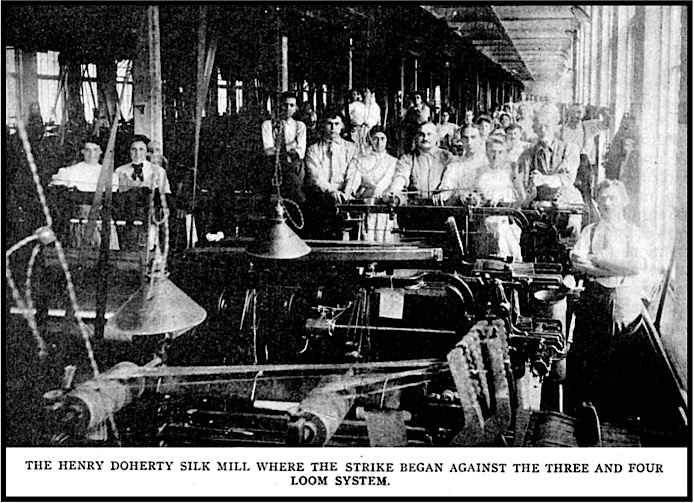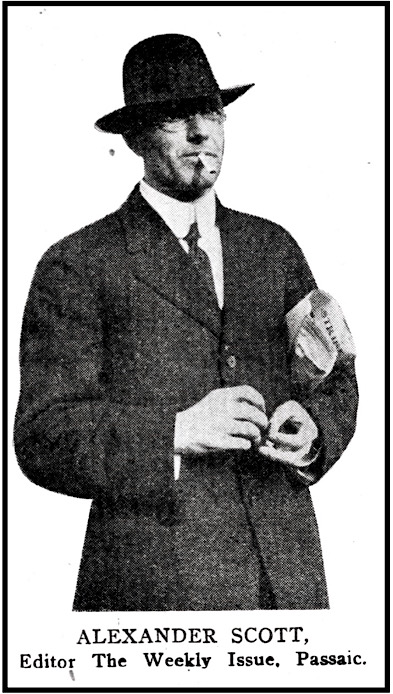 —————
—————
Hellraisers Journal – Friday May 2, 1913
Paterson, New Jersey – Bill Haywood on the General Strike of Silk Workers, Part I
From the International Socialist Review of May 1913:
The Rip in the Silk Industry
By William D. Haywood
———-[Part I of II]
WHEN the broad silk weavers in Henry Doherty’s mill in Paterson, N. ]., left their machines last February they inaugurated what has proved to be the closest approach to a general strike that has yet taken place in an American industry.
They revolted against the 3 and 4 loom system which until recently has been confined to the state of Pennsylvania. This system is restricted to the lower grades of silk, messaline and taffeta.
There are almost 300 silk mills in Paterson. Doherty was the first manufacturer to introduce this system there and later it was carried into 26 other mills. The silk workers soon realized that unless this scheme for exploiting them still further was checked, it would in time pervade the entire industry in the Jersey city.
The silk workers of Paterson are the most skilled in the United States and the employers thought that if there was anywhere in the country where this system could be successfully adopted it was in Paterson. They thought that their workers would stand for it. The workers themselves were not consulted, as the manufacturers afterward realized to their sorrow, when a general strike was called embracing the industry in all its branches and extending to all states where silk is manufactured.
At present no less than 50,000 silk workers are on strike in New Jersey, Pennsylvania, New York and Connecticut, including those in the preparatory processes, the “throwster” mills, dye houses, broad silk making in all grades, as well as in nearly all the ribbon mills.
In many respects this strike is hardly less significant than that at Lawrence. It involves nearly as many workers and the conditions are just as bad. But the Paterson revolt has attracted less public attention than did the woolen fight. This is due to several reasons.
In the first place, the manufacturers, through their control of outside newspapers, were able to bring about a general conspiracy of silence. The New York papers, for example, after the first few days in which they gave prominence to the strike, were warned through subtle sources that unless there was less publicity they would be made to suffer through loss of support and advertising. Then the Paterson strikers were fortunate in having among them several trained veterans in the labor movement, such as Adolph Lessig, Ewald Koettgen, and Louis Magnet, who had been members of the I. W. W. since 1906, and knew what to do towards putting the strike on an organized basis. For a time they were able to take care of themselves without relying much on outside help. Besides, the authorities kept their hands off for a time, after their first fright in which they threw Elizabeth Gurley Flynn, Carlo Tresca and later Patrick Quinlan and Alex Scott, the Socialist editor, into jail. These organizers got on the job instantly and have done excellent work.


